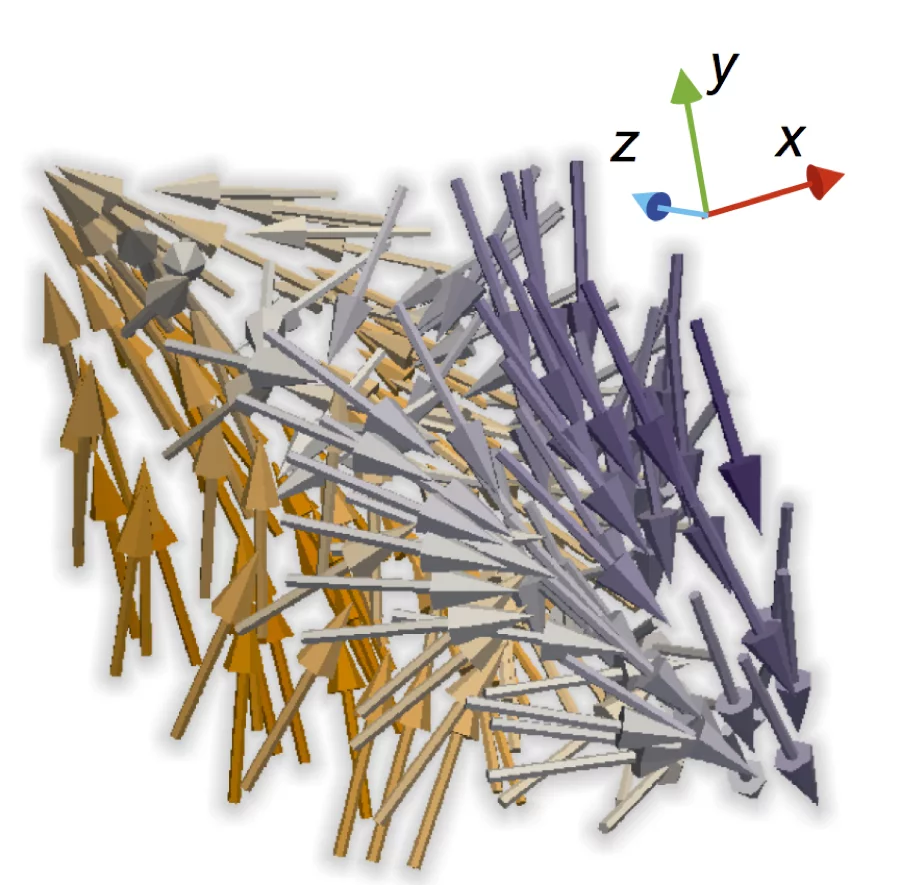In soft ferromagnetic materials, the smoothly varying magnetization leads to the formation of fundamental patterns such as domains, vortices and domain walls. These have been studied extensively in thin films of thicknesses up to around 200 nanometres, in which the magnetization is accessible with current transmission imaging methods that make use of electrons or soft X-rays. In thicker samples, however, in which the magnetization structure varies throughout the thickness and is intrinsically three dimensional, determining the complex magnetic structure directly still represents a challenge. We have developed hard-X-ray vector nanotomography with which to determine the three-dimensional magnetic configuration at the nanoscale within micrometre-sized samples. We imaged the structure of the magnetization within a soft magnetic pillar of diameter 5 micrometres with a spatial resolution of 100 nanometres and, within the bulk, observed a complex magnetic configuration that consists of vortices and antivortices that form cross-tie walls and vortex walls along intersecting planes. At the intersections of these structures, magnetic singularities—Bloch points—occur. These were predicted more than fifty years ago but have so far not been directly observed. Here we image the three-dimensional magnetic structure in the vicinity of the Bloch points, which until now has been accessible only through micromagnetic simulations, and identify two possible magnetization configurations: a circulating magnetization structure and a twisted state that appears to correspond to an ‘anti-Bloch point’. Our imaging method enables the nanoscale study of topological magnetic structures in systems with sizes of the order of tens of micrometres. Knowledge of internal nanomagnetic textures is critical for understanding macroscopic magnetic properties and for designing bulk magnets for technological applications.
- About the CentercloseAbout the Center
- Our Research
- Our User Facilities
- SINQ: Swiss Spallation Neutron Source
- SμS: Swiss Muon Source
- CHRISP: Swiss Research Infrastructure for Particle Physics
- Scientific Advisory Committees
- Publications
- Jobs & Education


